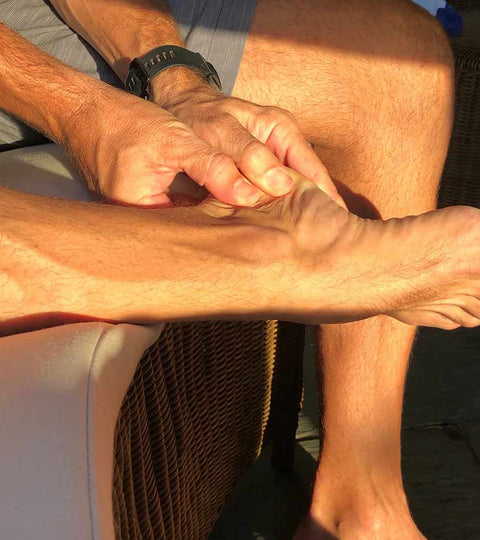There are many different types and causes of pain in the lower half of the body. It is impossible to list them all here or to give a you a definitive diagnosis on where your pain is coming from. In this blog I am just going to focus on one of them. A lack of control at your feet.
Traditionally people are told they have flat feet or high arches. Whilst this may be the case, having flat feet does not automatically mean that this is the cause of your pain and high arches does not mean you are immune to the same problems. The issue is the amount of movement that occurs at your feet as you walk or run. If you have flat feet that start flat and stay flat when you walk or run, you may have no issues. The same applies to high arches. The problems occur when you put your heels down and they roll inwards causing a knock on effect. The more movement that occurs after heel strike the more likely you are to have problems. As your foot rotates inwards the lower leg also turns in. This causes the knee to turn in which can have an effect on the lower back. The lower back is not the only part affected. The inward rotation of the knee can cause problems such as runners knee or ITB friction syndrome. There is the possibility of shin splints or, even worse, stress fractures in your lower leg due to excess rotation. The feet are not immune either. There is achilles tendonitis/tendinosis and plantar fasciitis. All big words for pain around the heel. Big words or not I can assure you they can be very painful.
All this from having mobile feet! What can you do about it. The key is control. If you control the mechanics of the feet then you can help correct the knock on effects up the body. How do you control your feet? There are a few ways. You can become extremely strong in the postural muscles around your feet, ankles, knees, hips and low back. This requires a lot of effort and constant work. The alternative is to control your feet with orthotics. When designed by a qualified podiatrist they can be extremely comfortable and very effective in controlling your foot mechanics. A podiatrist can try taping your feet to simulate the control of orthotics before prescribing them to you. The best orthotics look to control your heel and support your arch. This combination offers the ultimate in stability and comfort for your feet. When first wearing orthotics you should listen to your podiatrist and wear them in gradually. A few hours a day at first then two hours extra per day until you can wear them whenever you like. On wearing them you should experience no sharp pains or get any blisters. Some aching can be expected as you get used to your orthotics. You can have them designed for your running shoes, exercise shoes and work shoes, so there is really no excuse not to be wearing them everywhere.



